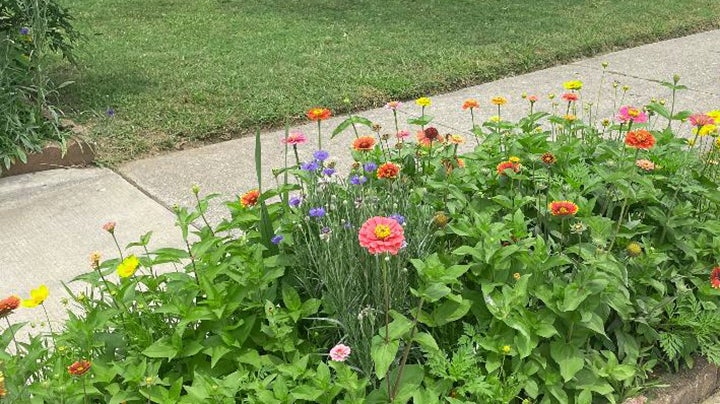Where does your plot of Earth fit?
Published 3:00 pm Sunday, May 29, 2022

- Photo by Felder Rushing Plant succession
Are you keeping your garden design stuck at a particular level of natural plant succession, or have you even thought about where it fits?
This was my Monday morning mull, while sliding through Mississippi aboard the fabled City of New Orleans train. I had been on an intense tour of over a hundred unique small gardens in an older part of Memphis where people are free to garden as they please. Which, given permission and celebrated by their neighborhood garden club, they do with gusto.
Some of the Cooper-Young quarter’s gardens are proudly manicured aprons of weed-free lawns set off with tightly edged beds; others were cottagey scenes of picket fences and mixed shrubs and flowers; and there was more than the usual smattering of quirky gallimaufry gardens, medleys overstuffed with wildflowers and yard art. Collections of heirloom plants accented with tire planters and glass bottle trees snuggled warmly against contemporary gardens of neatly-labelled new cultivars paired with high-end garden art; in the same block of houses, both styles are appreciated.
I was reminded of this as the scenes from the train flashed by in a disco light staccato, alternating between tangled jungles, fields of wildflowers, and open farmland shaved flat by machinery. No two farm fields, other than those almost artistically accented with a tractor or well pump, looked exactly alike, and the varying state of plant succession in the untended areas emphasized the helter-skelter fabric of untended nature.
This is where I started noticing what city gardens, natural areas, and agricultural endeavors have in common: Diverse stages of plant succession reaching inexorably towards its final stage of growth.
In Mississippi, most of which is naturally a dense woodland or swamp, the “climax” plant succession is trees, vines, and understory plants, until something like a fire or tornado opens it up to start it over with wildflowers, then small shrubs, then vines, then trees again.
It’s like shaving, which is basically keeping our bodies’ natural growth at bay for convenience, style, or health. Letting the face go is like getting rid of the lawn mower — before long it’s back to nature. Most of us strive for something in between; depending on our natures and degrees of compliance, we shape our follicles and landscapes into what pleases us, or is mandated by others.
In the garden, we choose and maintain our levels of plant succession, from keeping unnatural lawns at whatever level of perfection we can afford, to flowers and shrubs which only need occasional tweaking, to trees underplanted with woodland beauties and naturally leaf-mulched. Or combinations of them all.
This is where hard features — walks, patios, seating, arbors, and yard art — separate us as individuals.
Some home gardens are like schoolyards, regularly cut and pruned with little more than a tidy green moustache of shrubbery hugging the house. Some are more interesting, with curved or straight beds along the property lines, usually with a “throw rug” lawn in the middle like a putting green in a golf course. These mow and blow landscapes require regular high maintenance to keep the tides of nature at bay. Others, like farmers leaving fields fallow and covered in wildflowers, tolerate or even enjoy a relaxed mow what grows” approach lawn with seasonal clover and low wildflowers. Both ways are still acceptable lawns.
In some tightly controlled neighborhoods, personalized areas are tucked behind fences — “mullet gardens” with business up front, party out back. Others are naturalistic, wooded lots with small clearings connected with meandering paths; these are the lowest maintenance.
Where along the succession line does your plot of Earth fit?
Felder Rushing is a Mississippi author, columnist, and host of the “Gestalt Gardener” on MPB Think Radio. Email gardening questions to rushingfelder@yahoo.com.





